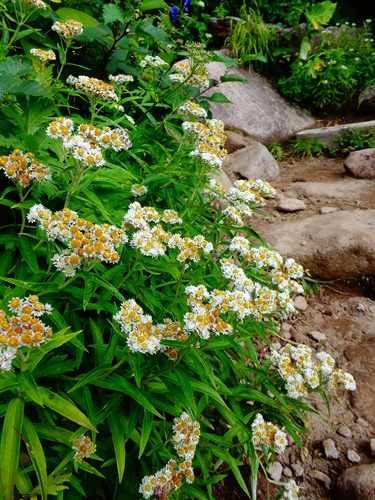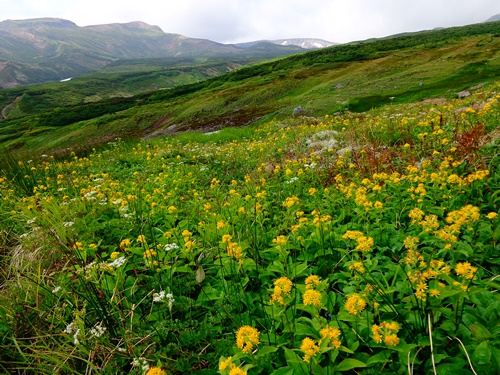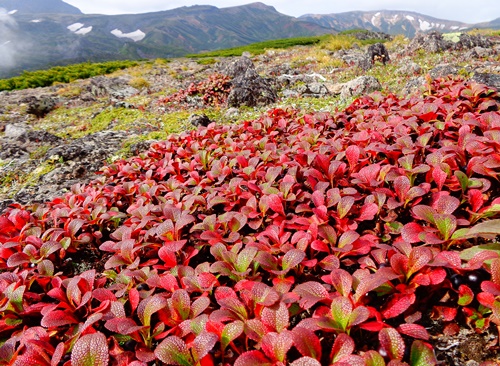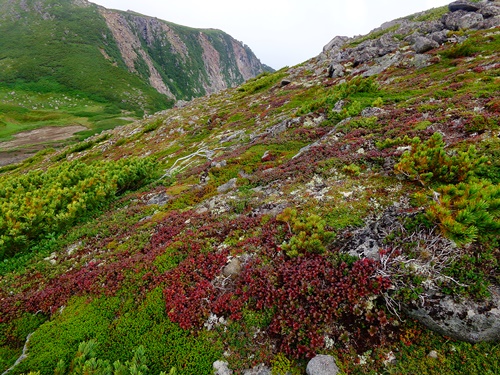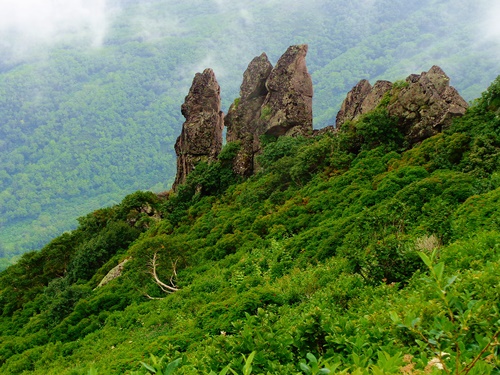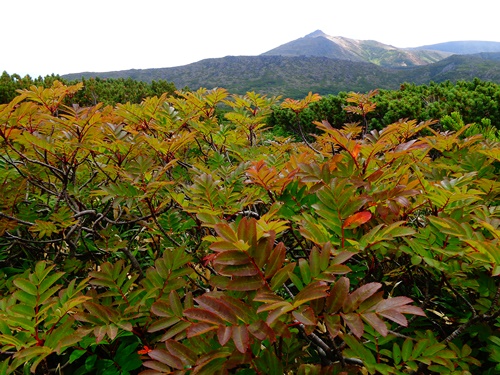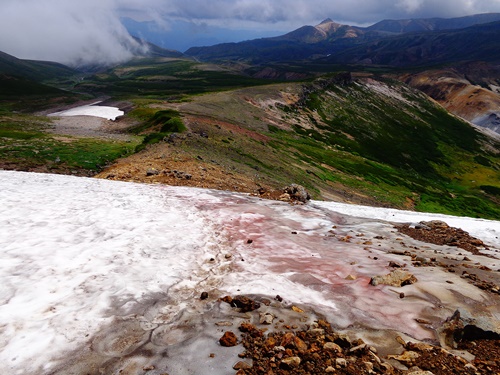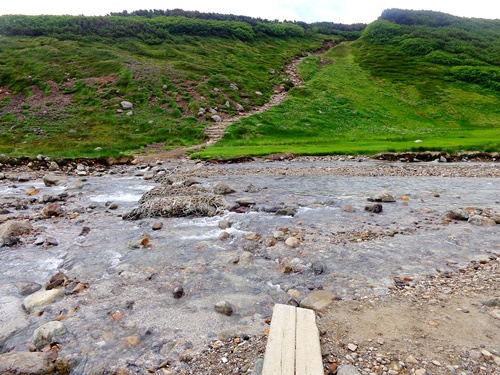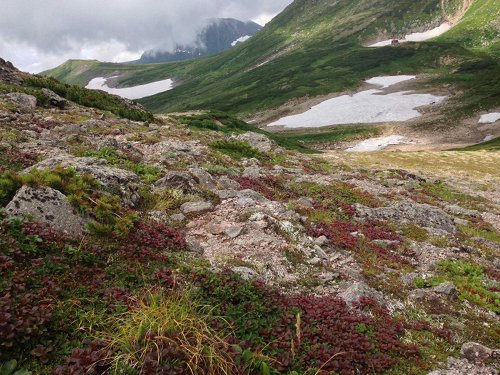More and more leaves are starting to turn. Meanwhile, on the eastern face of Mt. Kurodake, most of the flowering is nearing the end, although there are some flowers that remain beautiful.
The Anaphalis margaritacea subsp. margaritacea and Solidago virgaurea subsp. leiocarpa shown in the photos as well as Aconitum yamazakii, Parnassia palustris var. palustris, Campanula lasiocarpa, and Hypericum kamtschaticum create delightful landscapes along the trail.
At the same time, although limited in area, communities of Solidago virgaurea subsp. leiocarpa can be seen in the direction the Akaishi River. They look just like a yellow carpet.
Photos: Anaphalis margaritacea subsp. margaritacea near Mt. Kurodake’s 9th Station (left) and Solidago virgaurea subsp. leiocarpa in the direction of the Akaishi River (right) Aug. 18
The Anaphalis margaritacea subsp. margaritacea and Solidago virgaurea subsp. leiocarpa shown in the photos as well as Aconitum yamazakii, Parnassia palustris var. palustris, Campanula lasiocarpa, and Hypericum kamtschaticum create delightful landscapes along the trail.
At the same time, although limited in area, communities of Solidago virgaurea subsp. leiocarpa can be seen in the direction the Akaishi River. They look just like a yellow carpet.
Photos: Anaphalis margaritacea subsp. margaritacea near Mt. Kurodake’s 9th Station (left) and Solidago virgaurea subsp. leiocarpa in the direction of the Akaishi River (right) Aug. 18
